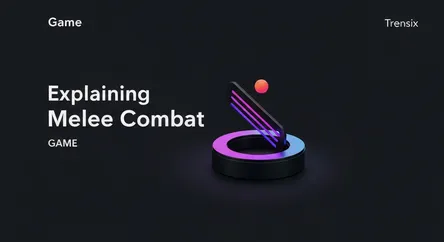Game
Explaining Melee Combat

What is melee in gaming? We explain this core gameplay mechanic, its role in popular genres, and why close-quarters combat remains so engaging.
What is it?
Melee refers to combat that happens at close range, without the use of projectile weapons. In video games, this typically involves fighting with handheld weapons like swords, axes, and hammers, or through unarmed methods like martial arts. It's the direct opposite of ranged combat, which uses bows, guns, or magic from a distance. Melee is a fundamental mechanic in many genres, including Role-Playing Games (RPGs), fighting games, action-adventure titles, and MOBAs. The gameplay focuses on positioning, timing attacks, and defending against enemy strikes, creating a visceral and immediate combat experience.
Why is it trending?
Melee is a timeless and foundational gameplay element rather than a fleeting trend. Its enduring popularity is constantly reinforced by blockbuster titles that perfect the formula. Games like the Dark Souls series, God of War, and Monster Hunter have placed a heavy emphasis on skillful, weighty melee combat, influencing the industry for years. The satisfaction of mastering complex combos, parrying an attack at the last second, and landing a powerful finishing blow provides a deep sense of accomplishment that keeps players engaged. It offers a high-risk, high-reward loop that is inherently thrilling.
How does it affect people?
Melee combat directly impacts the player's experience by creating intense, high-stakes encounters. It tests a player's reflexes, strategic thinking, and pattern recognition. Unlike ranged combat, melee forces players into immediate danger, requiring constant awareness of enemy movements and attack windows. Mastering a game's melee system often feels like learning a skill, leading to a strong sense of personal growth and mastery. This creates a powerful feedback loop that can be incredibly rewarding, making players feel like skilled warriors and keeping them invested in the game's world and its challenges.